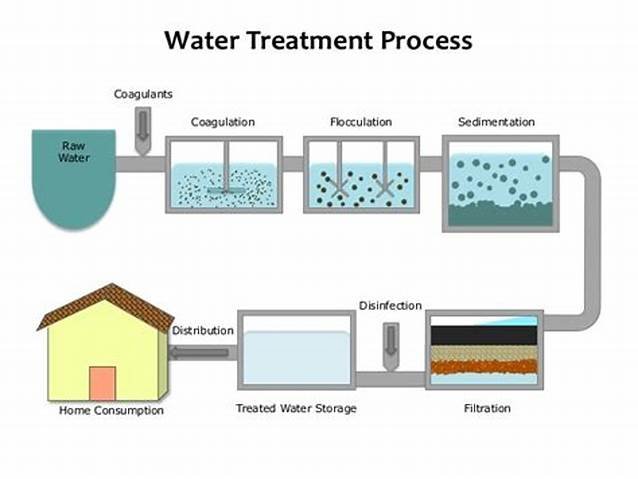Authored by: Allison Harten, Digital Communications Intern, CDRW
How does drinking water end up at your tap? How do you know if it’s safe to drink? Water from sources like rivers, reservoirs, or aquifers moves through water treatment plants that clean water and monitor it for any harmful chemicals, bacteria, or viruses. This process is critical to the Delaware River Watershed because the Delaware River serves as a drinking water source for more than 13 million people. Using a process of chemicals and filtration, water treatment plants can ensure clean and safe drinking water.
The very first step in water treatment is the intake valve. Raw water, or water that has not been cleaned, filters through grates and screens of various sizes to remove large debris and trash.
Next, the water moves into coagulation where chemicals are added to make sediment and other small particles stick together. This mixture is mixed lightly in flocculation to create larger clumps of material called flocs.
Once flocs are created, the water moves into the sedimentation phase. The large flocs are separated from the water as they sink to the bottom. The clean water is then filtered from the top.
During filtration, the partially treated water is passed through materials like sand, charcoal, and carbon filters. This stage removes finer and dissolved particles and some bacteria.
Finally, the water goes through the disinfection stage. A chlorine-based chemical is usually added to the water to remove any remaining bacteria and pathogens. UV light and ozone can also be used to disinfect water. At this stage, other compounds may be added to adjust things like pH and taste.
In some cases, like Philadelphia’s Water Treatment Facilities, disinfection occurs before coagulation. This can be followed by another disinfection stage later. Pre-disinfecting the raw water before it enters other stages can prevent certain bacteria and viruses from entering the treatment system and can affect what substances the plant uses in the rest of the treatment process. Pre-disinfection is a choice some water treatment plants make, but either way, the water at the end of the process is clean to drink.
Water is also tested and monitored throughout the stages of treatment to make sure the cleaning process is working properly. Water can also be tested after it leaves the plant to make sure it is still clean by the time it arrives at people’s homes. Philadelphia tests water at more than 65 locations around the city to ensure it is clean after it leaves the plant. Water can become contaminated as it moves through pipes due to metals that dissolve or erode in water or pipes that carry bacteria. Post-monitoring helps prevent these issues after drinking water leaves the plant. If you want to learn more about who provides your drinking water, check out this interactive map.
An important note:
This water treatment process applies to public water systems. If you have well water or a different system, your water does not go through this process. The quality of your water is dependent on your water source but can be treated with similar processes to ensure its safety. Well water can also be tested for different metals, bacteria, and contaminants.
Resources:
Water Treatment | Public Water Systems | Drinking Water | Healthy Water | CDC
A Guide to Source Water Monitoring for Drinking Water Treatment Plants (realtechwater.com)
Drinking Water – Philadelphia Water Department
Where Does My Drinking Water Come From? (americanrivers.org)
1.7: Water Treatment Facilities and Operations - Workforce LibreTexts
Owning a Home with Well Water | The 2023 Guide to Well Water (waterfilterguru.com)


